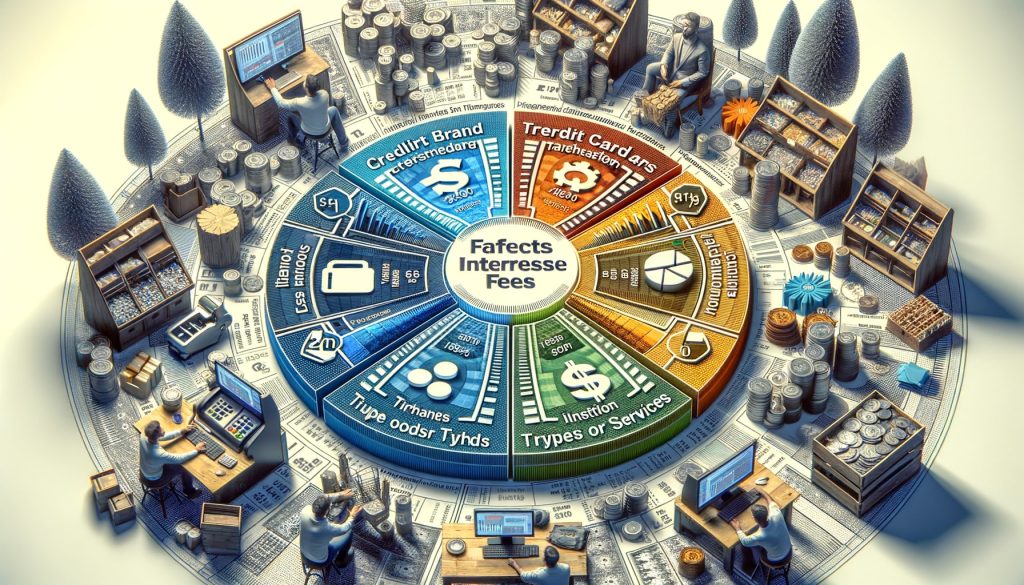Interchange fees are an integral part of the payment processing system that every business owner accepting credit and debit cards should understand. These fees, often referred to as “swipe fees,” are the charges that merchants pay to the cardholder’s issuing bank whenever a customer uses a card to make a purchase. While they may seem like a small component of the overall cost of doing business, interchange fees can have a significant impact on profitability, especially for businesses with tight margins.
This comprehensive guide aims to demystify interchange fees, providing you with detailed insights into what they are, how they work, and why they matter for your business. Additionally, we will explore how interchange fees are calculated, what factors influence them, and strategies for reducing them.
What Are Interchange Fees?
Interchange fees are transaction fees that merchants pay to the card-issuing bank when customers use credit or debit cards. These fees are designed to cover the risks and costs associated with processing card transactions. The fees are typically a percentage of the transaction amount, plus a flat rate.
For example, if the interchange fee is 2% plus $0.10, and a customer makes a $100 purchase using a credit card, the merchant would pay $2.10 in interchange fees.
Why Do Interchange Fees Exist?
Interchange fees exist to compensate the card-issuing bank for the risk they take when extending credit to consumers or when allowing debit cardholders to access funds. These fees help cover the following:
- Risk of Fraud: The issuing bank takes on the risk of fraudulent transactions and chargebacks.
- Operational Costs: Banks incur costs in maintaining card accounts, issuing cards, and processing payments.
- Rewards Programs: Many credit card issuers offer rewards such as cashback or points, and interchange fees help fund these programs.
Who Pays Interchange Fees?
While cardholders benefit from the convenience and perks of using credit or debit cards, the burden of interchange fees falls on merchants. When a customer makes a purchase using a card, the merchant pays the interchange fee, which is deducted from the transaction amount before the funds are deposited into their account.
How Do Interchange Fees Work?
Interchange fees are a crucial part of the payment ecosystem, involving multiple parties. Here’s a breakdown of the process:
The Parties Involved
- Cardholder: The person making the purchase using a credit or debit card.
- Merchant: The business that accepts the card as a form of payment.
- Issuing Bank: The bank or financial institution that issued the card to the cardholder.
- Acquiring Bank: The merchant’s bank or payment processor that receives the payment from the cardholder’s issuing bank.
- Card Network: Visa, MasterCard, Discover, or American Express, which facilitate the transaction between the issuing and acquiring banks.
The Transaction Flow
- Authorization: When a customer swipes or inserts their card, the merchant sends a transaction request to the acquiring bank. The acquiring bank then forwards the request to the card network, which in turn contacts the issuing bank for authorization.
- Approval or Decline: The issuing bank checks the cardholder’s account to ensure they have sufficient funds or credit. If everything checks out, the bank approves the transaction, and the cardholder’s account is debited or charged.
- Clearing and Settlement: After the transaction is approved, the issuing bank sends the funds to the acquiring bank, minus the interchange fee. The acquiring bank then deposits the net amount into the merchant’s account.
Interchange Fee Calculation
Interchange fees are usually calculated based on two factors:
- A Percentage of the Transaction: This percentage varies based on the type of card used, the industry of the business, and the level of risk associated with the transaction.
- A Fixed Fee: A flat fee is added on top of the percentage-based fee.
For instance, Visa might charge an interchange fee of 1.80% + $0.10 for a standard credit card transaction. On a $50 transaction, the interchange fee would be $0.90 (1.80% of $50) plus $0.10, for a total of $1.00.
Factors That Affect Interchange Fees

Interchange fees are not uniform and can vary widely based on several factors. Understanding these factors can help merchants anticipate their costs and potentially find ways to lower them.
1. Type of Card
Different cards come with different interchange rates. For example, rewards credit cards, which offer perks like cashback or travel points, tend to have higher interchange fees compared to standard credit or debit cards. This is because the issuing bank needs to fund the rewards programs, and merchants effectively pay for these perks through higher fees.
Credit vs. Debit Cards
Debit card transactions typically have lower interchange fees than credit cards because debit cards pull funds directly from a customer’s bank account, posing less risk for the issuing bank. In contrast, credit cards involve lending, which carries a higher risk, leading to higher fees.
2. Transaction Method
How the card is used also affects the interchange fee. Transactions are generally categorized into three types:
- Card-present: When the card is physically swiped, dipped (chip), or tapped in person. This method has the lowest risk of fraud and therefore lower interchange fees.
- Card-not-present: Transactions where the card is not physically present, such as online or over-the-phone payments. These transactions carry a higher risk of fraud and therefore have higher interchange fees.
- Contactless Payments: Near Field Communication (NFC) payments like Apple Pay or Google Pay are similar to card-present transactions but may have slightly different fees depending on the network.
3. Merchant’s Industry
The type of business you operate also impacts interchange fees. High-risk industries, such as travel, gambling, or adult entertainment, tend to have higher interchange fees because they are more prone to fraud or chargebacks. Low-risk industries, such as grocery stores, typically enjoy lower fees.
4. Transaction Size
Some card networks offer tiered interchange rates based on the size of the transaction. Smaller transactions may have a lower percentage fee but a higher fixed fee, while larger transactions may have a lower overall fee rate.
5. Level of Transaction Security
Transactions that involve higher security measures—such as chip cards, PIN verification, or 3D Secure for online payments—often benefit from lower interchange fees. This is because these security features reduce the risk of fraud, which lowers the cost to the issuing bank.
How to Reduce Interchange Fees

Reducing interchange fees can have a significant impact on your bottom line. While it’s impossible to eliminate these fees, there are several strategies you can implement to minimize their impact.
1. Choose the Right Payment Processor
Not all payment processors are created equal. Some offer more favorable terms when it comes to interchange fees. Make sure to shop around and compare processors to find one that offers competitive rates and lower transaction fees for your industry.
2. Optimize Transaction Types
Whenever possible, aim for card-present transactions, as these tend to have lower interchange fees. Encouraging in-person payments, using chip-enabled card readers, and accepting contactless payments are good ways to lower your interchange costs.
3. Consider Interchange-Plus Pricing
Interchange-plus pricing is a transparent pricing model where the processor charges the interchange fee set by the card network plus a fixed markup. This is generally more cost-effective than tiered pricing, where the processor may charge higher rates based on a less transparent fee structure.
4. Encourage Debit Card Payments
Since debit card transactions typically come with lower interchange fees, encouraging customers to use debit cards can help reduce your overall processing costs. You can promote debit card payments by offering small incentives, such as a discount on debit transactions.
5. Invest in Fraud Prevention
Investing in robust fraud prevention measures can help you reduce your interchange fees by lowering the risk of chargebacks and fraudulent transactions. Features like EMV chip readers, tokenization, encryption, and secure online payment gateways can improve security and lower your fees.
The Role of Card Networks in Interchange Fees

Card networks like Visa, MasterCard, Discover, and American Express play a key role in setting interchange fees. While the issuing banks receive the interchange fees, the card networks dictate the rates. Each network has its own fee schedule, and these rates can change periodically based on market conditions, regulatory changes, and advancements in payment technologies.
Visa and MasterCard
Visa and MasterCard have the most widely used card networks globally. Their interchange fees are generally competitive and are updated regularly. These networks offer various pricing tiers based on transaction type, industry, and card type.
American Express
American Express typically charges higher interchange fees compared to Visa and MasterCard. This is largely because American Express operates as both the card network and the issuing bank, meaning they take on more risk and offer higher rewards to cardholders.
Discover
Discover’s interchange fees tend to be more favorable than American Express but are still slightly higher than Visa and MasterCard. However, Discover often offers attractive incentives to merchants, such as lower processing fees for certain transaction types.
Regulations and Interchange Fees
In many regions, interchange fees are regulated by government bodies. These regulations aim to protect merchants from excessively high fees and ensure a fair payment processing environment.
The Durbin Amendment
In the United States, the Durbin Amendment, part of the Dodd-Frank Wall Street Reform and Consumer Protection Act, placed caps on debit card interchange fees. This legislation reduced the cost of debit transactions for merchants, particularly for large purchases.

